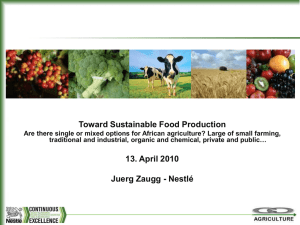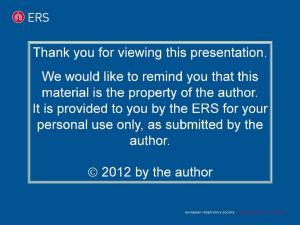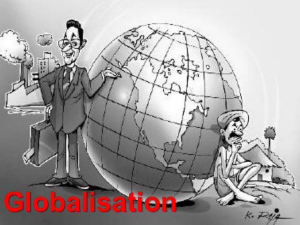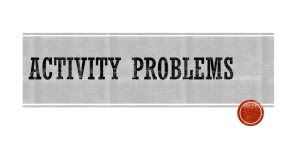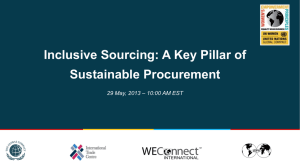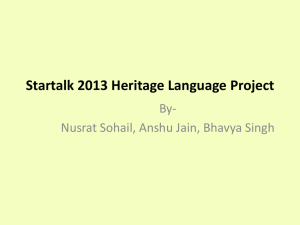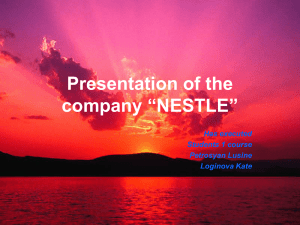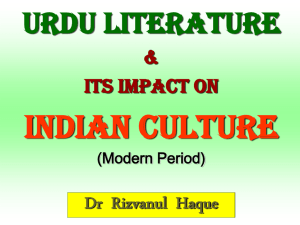Nestle`s Aquisition Report of Hain
advertisement
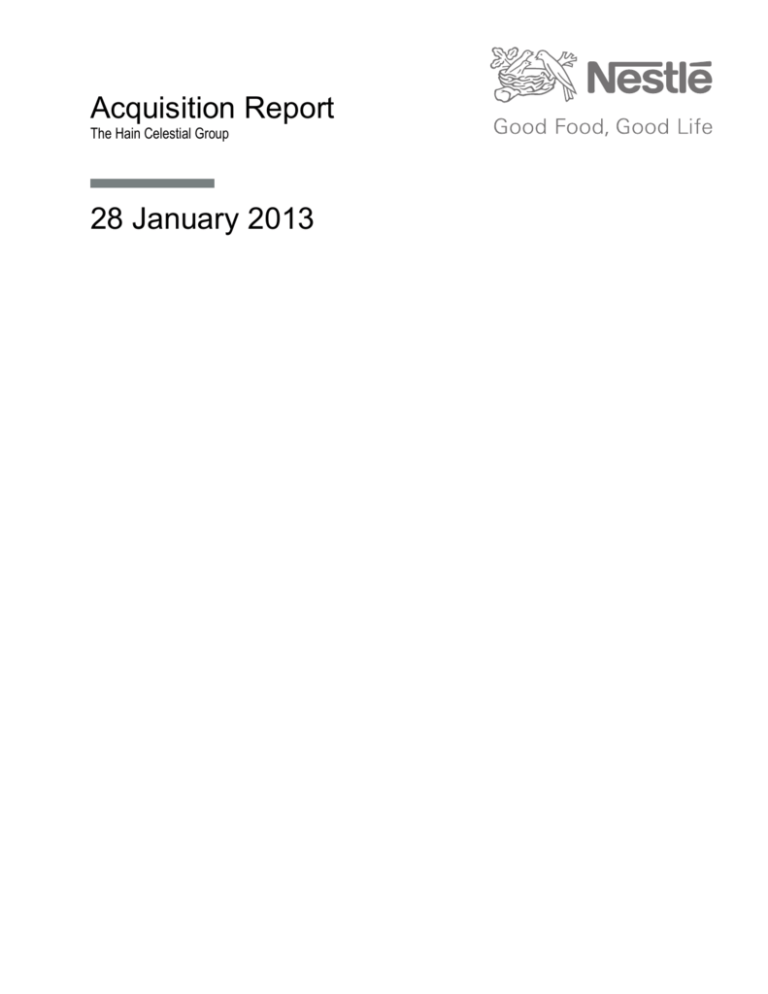
Acquisition Report The Hain Celestial Group 28 January 2013 Group information Lelan Dunavant Amanda Hoffmann Joshua Jelesky Bailey Piercefield Adam Smith 2 Acquisition Report: Hain Celestial Group Contents Executive Summary Page 4 Strategic & Cultural Fit Page 5 Value Enhancement Strategies Page 5 Post Acquisition Value of Hain Page 6 Strategy to Convince Hain to Accept Offer Page 7 Appendix A: Hain Integration Model Comparison Page 8 Appendix B: Value Added to Hain Inside Nestle Page 9 Appendix C: Hain Normal Distribution Integration Page 10 Appendix D: Hain Slow Distribution Integration Page 11 Appendix E: Hain Fast Distribution Integration Page 12 Appendix F: Value Added DCF Comparison Page 13 Appendix G: Discount Cash Flow of Suggested Offer Page 14 Appendix H: ROI/Payback Analysis Page 15 References Page 16 Acquisition Report: Hain Celestial Group 3 Executive Summary Nestlé Corporation considers itself the world’s foremost nutrition, health, and wellness company. For 108 years Nestlé has been striving to achieve a set of core principles embodied in the phrase “Good Food, Good Life.” Nestlé, having identified itself as having an “unmatched product and brand portfolio” and focus on “nutrition health and wellness” as a primary growth driver, would continue building both aspects of their brand through the acquisition of The Hain Celestial Group (Hain). We have identified three primary synergies that leverage the immense resources at Nestlé’s disposal to provide value to Hain. It is estimated Nestlé would realize a 32% return on investment over 10 years in the purchase of Hain for 13 billion US dollars (Appendix H). Hain has been identified as having convergent organizational mission, vision, and culture drivers with Nestlé. A buyout of the Hain would add to Nestlé a product line consisting of high quality organic and all natural products that conflict in only four overlapping products. Nestlé’s access to resources and distribution channels along with its global networks would provide Hain with the strength and buying power needed to continue growing into new markets. 4 Acquisition Report: Hain Celestial Group Strategic & Cultural Fit Nestlé developed the Nestlé Institute of Health Sciences and only budgets 2% on R&D, yet they are trying to develop tastier, healthier options. Hain’s established brands and snacks could enable Nestlé to further develop their goods rather than starting from the beginning in development. Nestlé’s foods, for the most part, are highly processed. With Hain, they could offer more natural snacks. Nestlé’s motto is “Good food. Good life.” This does not seem to fit with their product line, so Hain would better align Nestlé with their vision. Also, Hain’s motto is “Building tomorrow’s brands.” By joining the Nestlé Empire, Hain will achieve their motto. This would create a certain amount of efficiency, because Nestlé would have established, reputable healthy brands with loyal customers, all the while, Nestlé would not be wasting those dollars on R&D for new products without a following. Nestlé will enable more cost-effective production and distribution of Hain’s goods. With Nestlé’s factories around the world, it is proposed; Hain could gradually decrease outsourcing and increase insourcing to rely more on internal capital rather than contracts with producers. Hain distributes via a third party that sells to grocery stores, whereas Nestlé sells directly to grocery stores. By removing this extra step, we will capture more profits. By acquiring Hain, Nestlé would reach a larger customer base. It would gain a new sect of customers, because very few of Nestlé’s snacks are organic or all-natural. Those buying Hot Pockets are typically not the same people that are buying Earth’s Best organic goods. Acquisition Report: Hain Celestial Group There seems to be little overlap in the products each company offers. Nestlé is able to expand its production line, because Hain’s products are much more holistic, natural, and green than Nestlé’s. Hain’s culture is very open. The CEO does not close any meetings; employees are free to drop in and add their feedback whenever they want. Nestlé and Hain are both committed to having employees gain as much experience in other departments and areas as they want. Hain is a small company, so Nestlé’s culture would be the predominant culture, but on the whole, they both seem to align. Hain would be able to get placed in supermarkets and/or stores in which they were unable to in the past and vice versa as a result of Nestlé’s clout and relationships with grocery stores and sellers worldwide. With the sizeable marketing budget of Nestlé, Hain’s products can be easily advertised, and by doing so, they may gain a larger customer base than they currently enjoy. Value Enhancement Strategies Based on our analysis of Nestlé and Hain we have identified a number of synergies that leverage Nestlé’s resources to provide value enhancement to Hain. - The first strategy utilizes Nestlé’s inhouse distribution power and connection with retailers, to change Hain’s sales and distribution strategy. Currently, the majority of Hain’s sales are to independent food distributors, they buy food from Hain below 5 wholesale price and then sell to what ever retailers they want. As proposed by the merger, changing Hain’s distribution model will increase Hain’s gross margins getting them the wholesale price instead of the current partial price they are getting. Hain has likely not implemented a strategy like this yet because they would have to develop a distribution network, something that Nestlé already has. Further, independent distributors provide guaranteed sales because once they purchase Hain’s food it is their responsibility to find a retailer that will pay for it. - 6 The second strategy will further leverage Nestlé’s large retail power by affording Hain more shelf space in more markets. There is a correlation between shelf space and sales in grocery stores. Nestle will help provide access to shelf space through their already strong relationships with national retailers and helping Hain negotiate better slotting fees. Slotting fees are fees retailers charge for the introduction of new products to help mitigate any losses. Slotting fees depending on the product can range from $1,000- $25,000 per product per grocery chain. In retail stores that do not already carry Hain products the fees will be towards the high end of the range due to the “untested” nature of Hain’s products within its own stores. In stores that do carry Hain they will likely be lower and simply a way to get more shelf space. Overall, we feel these charges will negligible because of the good track record of the majority of Hain’s products. - The third value enhancement strategy is to speed up the process of Hain’s inhouse production. Every year Hain has been investing in itself to reduce the amount of contracted food production they use and produce the products themselves. Currently Hain is operating at 48% in house production. strategy would be to continually invest Hain until that number is 100% in-house. While money will have to be spent to build the production capacity necessary, over the long term this will help reduce Cost-of-Goods-Sold and further increase Hain’s profit margins. The result of the strategies combined is estimated to enhance the value of Hain by $10.7 B, from $2.23 B to $13 B (Appendix C). Other opportunities exist to realize even greater value from the synergies created by acquiring Hain. However, the discussed opportunities have been identified as primary and core to the success of the acquisition. Post Acquisition Value of Hain A discount cash flow (DCF) of Hain’s projected sales under the management of Nestlé was run and Hain has been valued at $13 billion USD. We feel our model creates an accurate depiction of what would happen if Nestlé acquires Hain and implements our recommended strategies (Appendix E). Further, we decided to offer slightly over what our DCF projected in order to beat-out other competition, but not high enough to make the acquisition unprofitable. Acquisition Report: Hain Celestial Group Strategy to Convince Hain to Accept Offer Nestlé’s strategy to convince Hain to accept their offer should be to illustrate all the benefits Hain will gain from the acquisition. Hain currently aligns with Nestlé’s roadmap and vision of becoming well known in the health, nutrition, and wellness industry. The acquisition fits culturally and strategically in a way that will allow a seamless transition for both companies. By implementing valueenhancing strategies, Nestlé will increase the worth of Hain by a significant margin. The benefits Hain will obtain include an opportunity to expand their products into global markets. Currently, there is very little product competition or overlap between Hain and Nestlé. Bringing Hain’s products under Nestlé’s name will expand Acquisition Report: Hain Celestial Group their customer base and marketing reach. Value enhancement strategies include a reduction in outsourcing for Hain and an increase in direct sales. Nestlé will eliminate the barrier of entries that small companies face to get the best shelf space in large stores. Hain will also benefit from the Nestlé’s R&D centers and Nestlé Institute of Health Science. After the acquisition, Nestlé plans to keep Hain’s management and current employees on board. Furthermore, Nestlé has no plans to shut down Hain’s R&D centers or factories. To make the acquisition more enticing, Nestlé plans to offer Hain a package, which consists of a combination of 1.5 billion cash, debt at 3.5% interest, and $290M in shares to the board. 7 Appendix A: Hain Integration Model Comparison 8 Acquisition Report: Hain Celestial Group Appendix B: Value Added to Hain Inside Nestle Acquisition Report: Hain Celestial Group 9 Appendix C: Hain Normal Distribution Integration 10 Acquisition Report: Hain Celestial Group Appendix D: Hain Slow Distribution Integration Acquisition Report: Hain Celestial Group 11 Appendix E: Hain Fast Distribution Integration 12 Acquisition Report: Hain Celestial Group Appendix F: Value Added DCF Comparison of Strategies Strategies No Strategies Direct Sales & New Markets Fast Integration Slow Sales Normal Sales Fast Sales Normal Integration Slow Sales Normal Sales Fast Sales Slow Integration Slow Sales Normal Sales Fast Sales Acquisition Report: Hain Celestial Group Difference Over No Strategies $2,227,213 $9,526,824 $15,263,926 $22,236,211 $6,283,461 $10,773,055 $16,039,181 $1,758,537 $4,055,039 $6,557,872 13 Appendix G: Discount Cash Flow of Suggested Offer Operating Income(EBITDA) Terminal Value Total Cash Flow PVIF PV DCF WACC 14 $ $ $ $ 2012 0 144,875 $ 2013 1 248,466 $ 2014 2 337,015 $ 2015 3 477,237 $ 144,875 $ 1.00 144,875 $ 13,000,268 248,466 $ 0.93 230,061 $ 337,015 $ 0.86 288,936 $ 477,237 $ 0.79 378,846 $ 2016 4 715,965 $ $ 715,965 $ 0.74 526,255 $ 2017 5 1,128,111 15,668,211 16,796,323 0.68 11,431,295 0.072 Acquisition Report: Hain Celestial Group Loa nI nfo rm ati on Appendix H: ROI/Payback Analysis Cash Flow Information Year n Cash Payment Remaining Principal of Loan Additional Principal Payment Interest Payment Shares Loan Payments PVIF Disc. Value of Payment Total Cost of Loan Year n Cash Payment Remaining Principal of Loan Additional Principal Payment Interest Payment Shares Loan Payments PVIF $ 2013 0 2,500,000 $ 10,210,000 2014 1 2015 2 2016 3 2017 4 $ 9,459,840 $ 8,670,610 $ 7,839,174 $ 6,959,207 $ $ 750,160 408,400 $ $ 789,230 378,394 $ $ 831,436 346,824 $ $ 879,967 313,567 $ - $ $ 290,000 (2,790,000) $ 1 Disc. Value of Payment $ Total Cost of Loan $ (1,158,560) $ 0.93283582090 (789,230) $ 0.87018266875 (831,436) $ 0.81173756413 (879,967) 0.75721787699 (2,790,000) $ 9,874,513 (1,080,746) $ (686,774) $ (674,908) $ (666,327) Hain EBITDA Nestle EBITDA Total EBITDA $ $ $ 248,466 13,998,930 14,247,396 $ $ $ 337,015 14,666,189 15,003,204 $ $ $ 477,237 15,307,361 15,784,598 $ $ $ 715,965 15,912,750 16,628,715 $ $ $ 1,128,111 16,471,225 17,599,336 Breakeven Balance $ 9,626,046 $ 9,289,032 $ 8,811,795 $ 8,095,831 $ 6,967,719 2018 5 2019 6 2020 7 2021 8 2022 9 2023 10 2024 11 2025 12 $ 6,051,479 $ 5,119,558 $ 4,167,832 $ 3,201,622 $ 2,227,305 $ 1,252,456 $ 285,999 $ $ $ 907,728 278,368 $ $ 931,921 242,059 $ $ 951,726 204,782 $ $ 966,210 166,713 $ $ 974,316 128,065 $ $ 974,849 89,092 $ $ 966,457 50,098 $ $ $ (907,728) $ 0.70635995987 (931,921) $ 0.65891787302 (951,726) $ 0.61466219498 $ (641,183) $ (614,060) $ (584,990) $ (966,210) $ (974,316) $ (974,849) $ (966,457) $ (285,999) 0.57337891323 0.53486838920 0.49894439291 0.46543320235 ########## (554,004) $ (521,131) $ (486,396) $ Hain EBITDA Nestle EBITDA Total EBITDA $ $ $ 1,184,517 16,970,049 18,154,566 $ $ $ 1,243,743 17,394,686 18,638,429 $ $ $ 1,305,930 17,728,591 19,034,521 $ $ $ 1,371,226 17,952,975 19,324,201 $ $ $ 1,439,788 18,046,542 19,486,330 $ $ $ 1,511,777 17,985,206 19,496,983 Breakeven Balance $ 5,783,203 $ 4,539,460 $ 3,233,530 $ 1,862,304 $ 422,516 $ (1,089,261) Assumption Interest Rate WACC Final Metrics 285,999 11,440 ROI Breakeven $ $ $ (449,821) $ 1,587,366 17,741,768 19,329,134 (124,173) $ 1,666,734 $ 17,285,561 $ 18,952,295 0.04 0.072 32% 9-10 year Our analysis of the loan needed to pay for Hain, paying off the principal at 5% of total EBITDA, has shown we will have an ROI of 32%, a discounted payback period between 910 years, and a discounted total cost of $9.87 B. Based off of this data we would recommend moving forward with our offer of $13 B to purchase Hain. The loan’s interest rate was based off of a 3.5% LIBOR rate, creating an interest rate of 4%. Acquisition Report: Hain Celestial Group 15 References Bryant, A. (2011, March 19). All Are Welcome at His Mettings. (That Means Interns, Too.). The New York Times. Retrieved from http://www.nytimes.com/2011/03/20/business/20corner.html?pagewanted=all& _r=0 Food Entrepreneurs. (2008, July 23). Calculating Wholesale and Distributor Pricing. Retrieved from http://specialtyfood.ning.com/forum/topics/699063:Topic:4685 Investor Relations. (n.d.) The Hain Celestial Group. Retrieved from http://ir.Haincelestial.com/phoenix.zhtml?c=87078&p=irol-irhome Sales Press Conference. (2012, October 18). Nestle asset library. Retrieved from http://www.nestle.com/assetlibrary/Documents/Library/Presentations/Sales_and_Results/2012-nine-monthsales-pressconf.pdf Strom, S. (2012, July 7). Has ‘Organic’ Been Oversized?. The New York Times. Retrieved from http://www.nytimes.com/2012/07/08/business/organic-food-purists-worryabout-big-companies-influence.html?ref=Haincelestialgroupinc Vermont Specialty Food Manual. (2010). Vermont Agency of Agriculture Food and Markets. Retrieved from http://www.vtspecialtyfoods.org/manual/interior.php/sid/22 Working at Nestle. (2012). Nestle Careers. Retrieved from http://www.nestlecareers.co.uk/html/culture-nestle-jobs.htm 16 Acquisition Report: Hain Celestial Group

